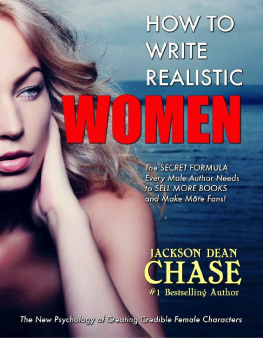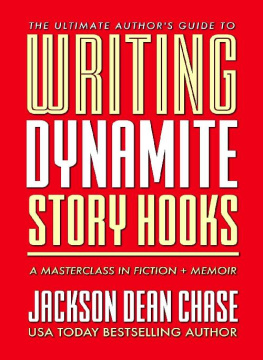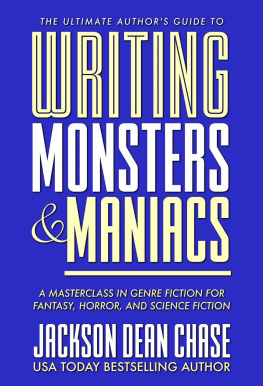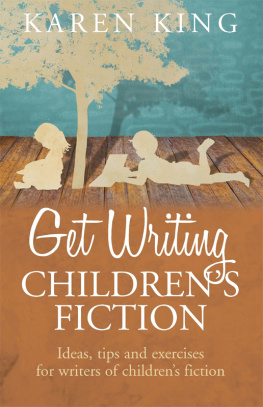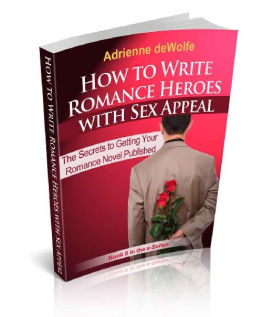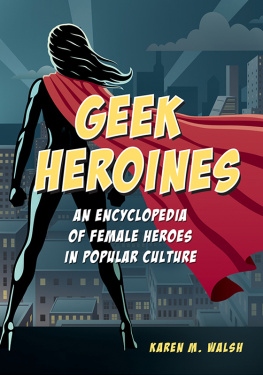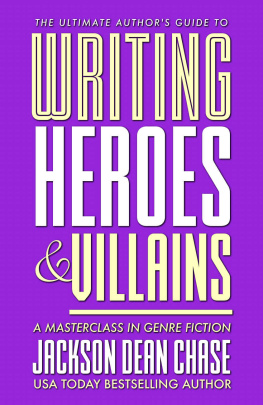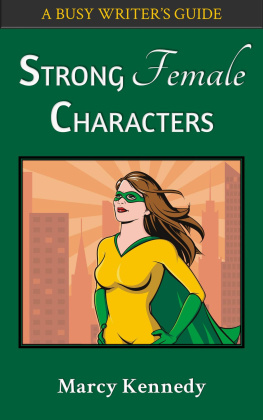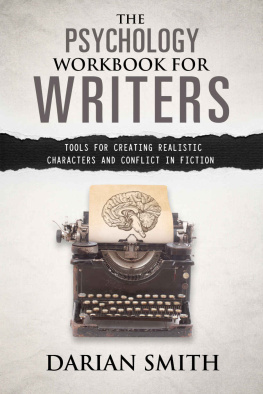How to Write Realistic Women
The Secret Formula Every Male Author Needs to Sell More Books and Make More Fans
Jackson Dean Chase
Jackson Dean Chase, Inc.
Contents
F or the women in my life
and my imagination
[Jackson Dean Chase] has a way with words that leaves me in awe of his understanding of the female psyche."
Melanie Marsh, Fang Freakin' Tastic Reviews
Introduction
I n this short quick-start guide for busy writers, I'm going to teach you the top secrets of how to create fully realized, three-dimensional female heroes and villains. I'm going to give you all the same resources, the same research, but I'm going to deliver it in bite-size chunks, with practical examples of the very real and very different challenges women face that men don't. If you're a man (and I assume you are), some of these challenges you may be aware of, others you may not.
Let me shoot the elephant in the room: This is not a boring, politically correct manifesto on feminism or social justice or anything like that. There are plenty of in-depth books on gender equality and women's issues by far more qualified writers. What this book does is provide a unique toolkit for male authors to learn how to write realistic women in the easiest and shortest way possible.
Why should you do this? Beyond the obvious goal of being a better, more well-rounded writer and providing strong role models, there is another incentivea financial one. Women read more books than men and they also write more reviews. Not just by a little bit, but by a lot! And women naturally want to see themselves reflected in your words. That can't happen if you don't know the secrets contained in this book. These secrets are how you win over female readers, sell more copies, and get better reviews. So don't wimp out.
Are you ready? It's time to man up and write realistic women!
Jackson Dean Chase
Best selling author of How to Start Your Novel
www.JacksonDeanChase.com
P.S.: This book deals in generalities and is not meant to be a blanket statement about an entire gender. Exceptions to everything can and do exist. By first understanding the basics of how women think and act, it becomes easier to know how and why your female characters are the way they are. Youll also know what happens when your characters deviate from the basicswhat they gain, what they lose, and why they think its worth the trade-off.
1
Gender Differences in Storytelling
W hen I was researching my first novel, I came across Christopher Voglers The Writers Journey: Mythic Structure for Writers, a book that put the storytelling theory of Professor Joseph Campbell into an easily accessible, digestible formula for writers. It's a great book, but focused solely on the male perspectivewhich was a problem, since I was writing a novel with a female main character.
Then I stumbled across Kim Hudsons The Virgins Promise: Writing Stories of Feminine Creative, Spiritual, and Sexual Awakening. This presented a feminine take on Campbells theoryagain, for writersand really opened my eyes to gender differences in storytelling.
While mens stories are all about defeating external evil and saving others, womens stories are much more about defeating internal evil and saving themselves.
In other words, most masculine stories adhere to mythic structure, while most feminine stories adhere to fairy tale structure. That's not to say men cant go on feminine journeys (such as Kevin Spacey's character does in American Beauty) or women cant go on masculine ones (such as Dorothy The Wizard of Oz). Part of the fun of being a writer is deciding which kind of journey you want your main character to go on.
Masculine and Feminine Heroic Journeys
To differentiate between the two types, The Virgin's Promise refers to a female main character going on a feminine journey as a virgin (the term in this context isnt sexually-related, but refers to the heroines unawakened, inexperienced state). The author explains the story difference as:
The quest of the Virgin is to become all she is capable of being and in so doing create joy and happiness. The quest of the Hero is to assert his will against evil and in so doing overcome fear.
Kim Hudson, The Virgin's Promise
Ms. Hudson goes on to illustrate there are other differences too, most strikingly in the stakes involved:
The tensions are also different in the Virgin and Hero stories. The cost of the Virgin going on her pathway is the potential loss of love, joy, and passion. Without these things that accompany the fulfillment of her dream, the Virgin suffers loss of self, which manifests as depression, insanity or suicide. The cost to the Hero going on his journey is potentially death. This loss of life at the hands of others will involve physical pain and leave his village vulnerable to evil.
So the Virgin is not likely to die except by her own hand, and neither is her village necessarily doomed (indeed, they may not even understand there is a problem at all). The Hero, on the other hand, has an extremely high chance of being killed by his enemies, and everyone in his village understands they will suffer too if he fails. As Kim Hudson explains it:
Both stories follow an emotional pattern in which the protagonist is at first tenuous, then takes a chance and almost loses, but learns from this experience and finally follows the pathway to success. In short, they both go through emotional reversals that make for great storytelling.
Until I read The Writer's Journey and The Virgin's Promise, I was blind to the fundamental gender differences in storytelling. But my journey didnt end there
2
How I Learned To Write Female Characters
W hen I set out to write my first novel, I did the math and figured Id make the main character female. Women buy more books, therefore they must want to read about women. But why would they want to read about ones written by a man? And me specifically?
The problem was, even though Id been around women my whole lifehad dated them, lived with them, been friendsI didnt know much about them. Oh sure, I knew they were different than guys, but I had no idea why.
If I was going to write an authentic female, it was time to find out!
Where to begin?
Id always loved Mean Girls (underdog stories are my favorite), so I started my research by reading Queen Bees and Wannabes by Rosalind Wiseman, the non-fiction book the movie was (loosely) based on. That was revealing, but only whet my appetite for more. A female friend recommended Reviving Ophelia by Mary Pipher, and that was helpful too. Bren Brown's Daring Greatly further added to my understanding of the complicated, spiraling shame web that surrounds women (men, on the other hand, get a prison-type box to hide our shame in).
To quickly summarize, Brown says men live by one rule: Don't be weak, while women live by an endless supply of contradictory rules: Dress sexy, but don't look like a slut, Work hard but make it look effortless, etc. And here I thought the one rule men live by was hardat least it doesn't contradict itself! Since I was writing a dark, edgy book, I also read memoirs like Kerry Cohen's Loose Girl: A Memoir of Promiscuity and chick-lit like Martha O'Connor's The Bitch Posse. I watched all the hip teen girl shows like Pretty Little Liars, The Lying Game, Twisted, etc. Through combining everything I'd learned from all these sources, I quickly and easily learned how female characters acted and reacted to various situations, how they related to others, even to themselves.

